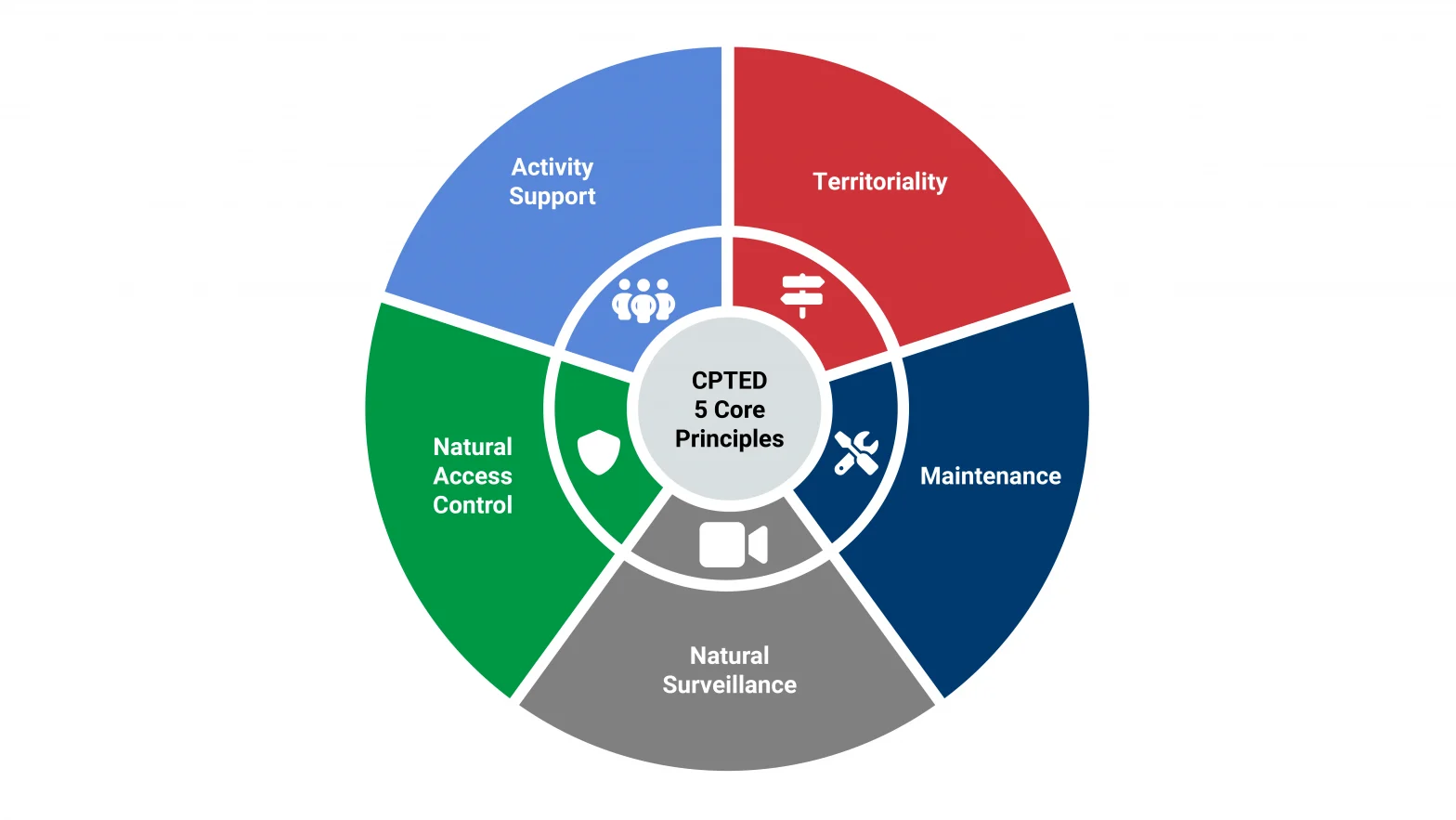Introduction to CPTED: What It Is and Why It Matters
Crime Prevention Through Environmental Design (CPTED) is a proactive approach to security that focuses on designing spaces to reduce crime and enhance safety. It integrates environmental design, maintenance, and usage strategies to create areas that naturally deter criminal activity. CPTED is based on the principle that the environment can be deliberately manipulated to influence human behavior and reduce opportunities for crime. Whether it’s a home, school, or business, CPTED principles emphasize elements like visibility, access control, and territorial reinforcement to make spaces safer and more inviting.
CPTED has become a vital aspect of modern crime prevention, with applications ranging from urban planning to building design. By addressing environmental factors, CPTED not only deters criminals but also creates a sense of ownership and community that fosters collaboration in maintaining safe spaces.
Why CPTED Matters:
- Reduces Crime Opportunities: CPTED strategies are designed to eliminate or minimize the physical features that make a property attractive to criminals. By addressing design flaws and encouraging natural surveillance, CPTED makes it more challenging for criminals to act unnoticed. For instance, installing motion-activated lighting in dark alleys improves visibility and deters loitering.
- Promotes a Sense of Security: Environments designed with CPTED principles feel safer for occupants, encouraging greater use of shared spaces and fostering community engagement. When people feel safe in their surroundings, they are more likely to participate in community activities, which further enhances security through collective oversight.
- Enhances Property Value: Properties that are secure and well-maintained are more desirable to buyers, renters, and businesses. Enhanced safety measures can also lead to lower insurance premiums, making CPTED a cost-effective investment.
- Supports Sustainability: CPTED principles often align with sustainable design practices, such as the strategic use of natural lighting and eco-friendly landscaping. These measures can reduce energy consumption and contribute to environmental conservation while improving safety.
Key Principles of CPTED:
- Natural Surveillance: Increasing visibility is at the core of CPTED. By designing spaces that allow clear sightlines and reducing obstructions, potential offenders are deterred by the risk of being seen. Examples include placing windows strategically to overlook public areas or using open fencing instead of solid barriers.
- Territorial Reinforcement: Design elements such as fences, signage, and landscaping establish clear boundaries and signal ownership. These features communicate that the area is actively managed and monitored, discouraging unauthorized access.
- Access Control: Controlling entry points and directing pedestrian or vehicular traffic reduces opportunities for unauthorized individuals to enter the property. This can include the use of gates, security personnel, or even natural barriers like dense hedges.
- Maintenance: Regular upkeep ensures the environment remains safe, functional, and welcoming. Neglected properties are often seen as easy targets for crime, while well-maintained areas indicate active ownership and oversight.
Practical Applications of CPTED:
- Residential Areas: Ensuring front yards are open and visible, installing streetlights, and maintaining clear pathways.
- Schools: Using strategic landscaping to define boundaries, controlling entry points, and ensuring playgrounds are well-lit.
- Commercial Spaces: Implementing visible security measures such as cameras, ensuring parking lots are free of obstructions, and using signage to guide visitors.
By implementing CPTED principles, property owners can take a significant step toward creating safer communities. The benefits extend beyond reducing crime, fostering environments that are welcoming, functional, and sustainable. Learn more about CPTED principles and their application by visiting the International CPTED Association.

